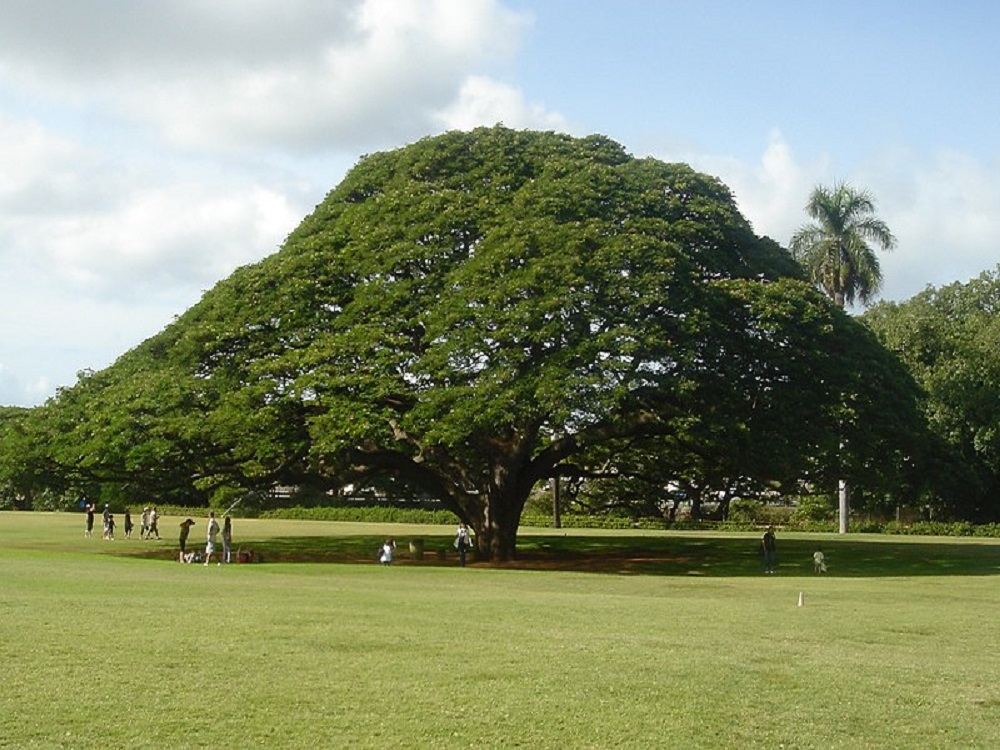Gulabi Siris - Rain Tree

Albizia saman
Summary
Scientific Classification
Kingdom: Plantae
Division: Magnoliophyta
Class: Magnolipsida
Order: Fabales
Family: Fabaceae
Genus: Albizia
Species: A.saman
Scientific Name: Albizia saman (Jacq.)Merr.
Common names
English : Rain tree, Crow Bean tree; Monkey pod ,Coco tamarind, East Indian Walnut.
Hindi: Gulabi Siris, Vilaiti siris.
Kannada: Bagekayi, Bhagaya mara.
Marathi: Guango.
Discription
- Habit and Habitat: Large, fast-growing, deciduous tree of up to 25 m tall, it has a very wide umbrella-shaped crown.Native to dry forests and savannahs of tropical Americas. Widely introduced as landscape tree in tropical SE Asia and Hawaii.
- Distribution: native to tropical South America but planted across the tropics.
- Morphology:
Leaf: : Bipinnate, leaflets oval obtuse, oblique.
Inflorescence: Solitary globose heads.
Flowers: The flowers of Albizia saman are grouped in axillary head. The heads grow in racemes. The peduncle of the head is about 4-5 cm long. CALYX: The calyx-tube is campanulatess, shortly lobed, light green-coloured and tomentose. COROLLA: The corolla is composed of 5 pink-coloured and tomentose petals. The petals are oblong and connate at the base, about 6-8 mm long and 2 mm wide.
Androecium: The androecium is composed of numerous stamens. The filaments are 2.5-3 cm long, connate at the base and pinkish at the tip. The stamens have tiny and globose anthers.
Gynoecium: The style is 2.5-3 cm long with a simple stigma. The ovary is about 5-6 mm long.
Fruit: The fruit is a fleshy pod, sweet to the taste and much relished by squirrels, horses and cattle.
Seeds: The seeds of Albizia saman are elliptic-oblong and compressed. They are about 1 cm long and 0.5 cm wide and dark brown-coloured. The seeds are embedded in the fruit pulp and there are many seeds per pod.
Flowering and Fruiting time: March-October. - Propagation: Through seeds.
- Importance:
a.Planted on roads as a very rapid growing shade tree and for its attractive pink flowers.
b.Leaves and pods are used as fodder for cattle.
c.Due to the wood’s resistance to fungus and termites, the wood is also used in making fine furniture. - Location: Distributed throughout campus.
 Trees of GSS Project supported by Makerspace Belgaum Website concept and designe by
Trees of GSS Project supported by Makerspace Belgaum Website concept and designe by